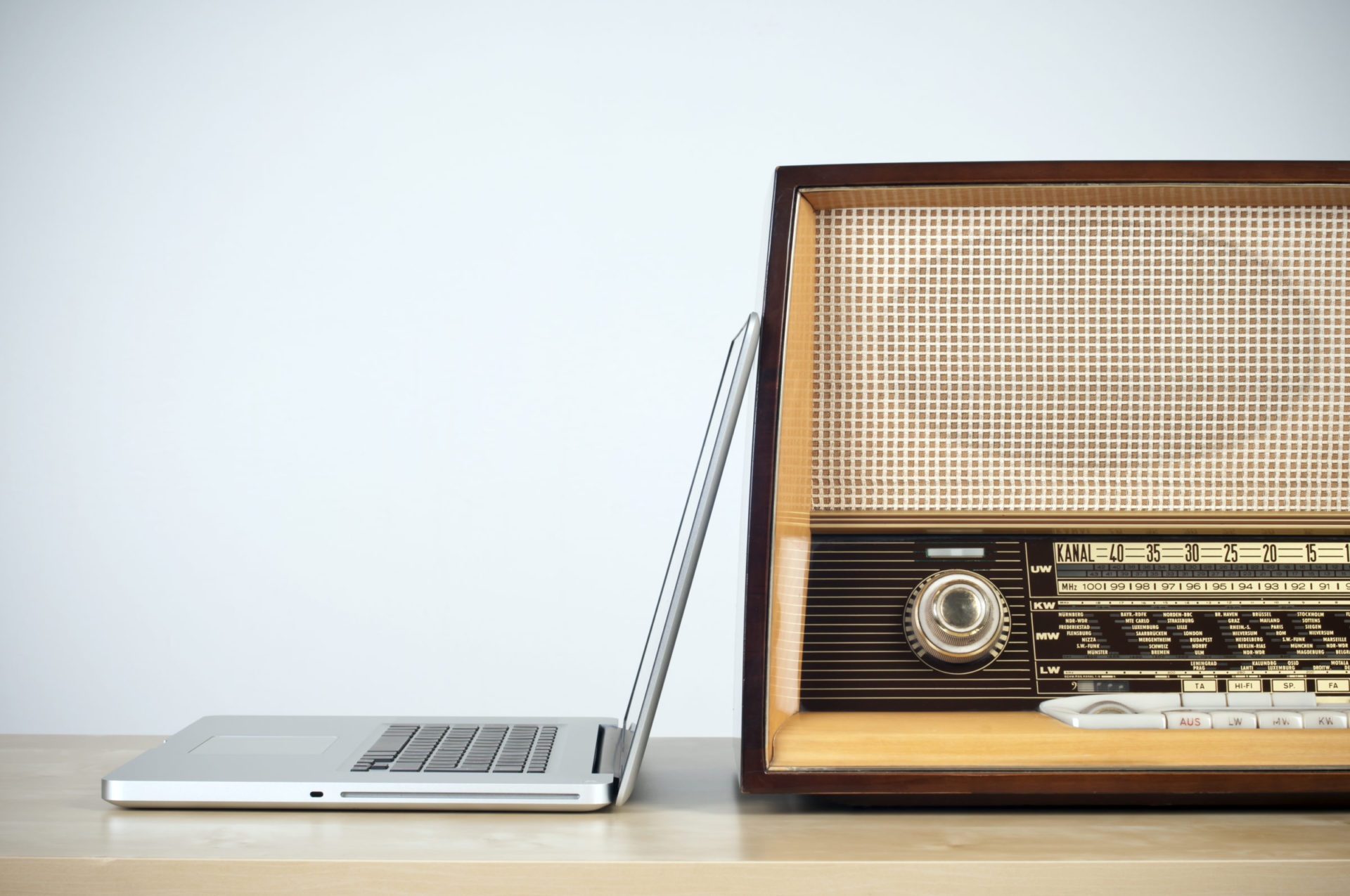
Around two o’clock in the afternoon on October 30, 1973, a disc jockey at the New York City radio station WBAI played a track called “Filthy Words” from comedian George Carlin’s latest album. “I was thinking one night about the words you couldn’t say on the public airwaves,” Carlin began. He then rattled off seven choice examples — “f***” was among the milder ones — and proceeded to riff on their origin, usage, and relative offensiveness for the next ten minutes.
A Long Island man named John Douglas heard the broadcast as he was driving home from a trip to Connecticut with his teenaged son. He promptly filed a complaint with the Federal Communications Commission. “Whereas I can perhaps understand an ‘X-rated’ phonograph record’s being sold for private use, I certainly cannot understand the broadcast of same over the air that, supposedly, you control,” he wrote. “Can you say this is a responsible radio station, that demonstrates a responsibility to the public for its license?” After a year-long investigation, the FCC ruled that the station had violated a decades-old law that prohibits the broadcast of “obscene, indecent, or profane language.” The commission emphasized that, when it comes to the regulation of speech, broadcasters require “special treatment” because they operate “in the public interest.”
WBAI’s parent company appealed the ruling. In 1977 the D.C. Circuit Court issued a split decision reversing the FCC action, saying it was “overbroad” and entered “into the forbidden realm of censorship.” The FCC took the case to the Supreme Court. A year later, in a contentious five-to-four ruling, the Court sided with the commission. Writing for the majority, Justice John Paul Stevens observed that, while “each medium of expression presents special First Amendment problems,” broadcast media’s “uniquely pervasive presence in the lives of all Americans” — a presence, he noted, that extends beyond the public square and into the home — circumscribes its free-speech protections. An electronic broadcast is different from an electronic call between two persons, Stevens argued, and the two forms of communication deserve to be treated differently under the law. While the government can’t police private conversations, it can regulate the content of broadcasts to protect the public interest.
Today, mired as we are in partisan, bitter, and seemingly fruitless debates over the roles and responsibilities of social media companies, the controversy surrounding George Carlin’s naughty comedy routine can seem distant and even quaint. Thanks to the Internet’s dismantling of traditional barriers to broadcasting, companies such as Facebook, Google, and Twitter transmit a volume and variety of content that would have been unimaginable fifty years ago. What’s at issue now is far greater than the propriety of a few dirty words. Arguments over whether and how to control the information distributed through social media go to the heart of America’s democratic ideals.
It’s a mistake, though, to assume that technological changes, even profound ones, render history irrelevant. The arrival of broadcast media at the start of the last century set off an information revolution just as tumultuous as the one we are going through today, and the way legislators, judges, and the public responded to the earlier upheaval can illuminate our current situation. Particularly pertinent are the distinctions between different forms of communication that informed the Supreme Court’s decision in the Carlin case — and that had guided legal and regulatory policy-making throughout the formative years of the mass media era. Digitization has blurred those distinctions at a technical level — all forms of communication can now be transmitted through a single computer network — but it has not erased them.
By once again making such distinctions, particularly between personal speech and public speech, we have an opportunity to break out of our current ideological bind and create a democratic framework for governing social media that is consistent with the country’s values and traditions.
For most of the twentieth century, advances in communication technology proceeded along two separate paths. The “one-to-one” systems used for correspondence and conversation remained largely distinct from the “one-to-many” systems used for broadcasting. The distinction was manifest in every home: When you wanted to chat with someone, you’d pick up the telephone; when you wanted to view or listen to a show, you’d switch on the TV or radio. The technological separation of the two modes of communication underscored the very different roles they played in people’s lives. Everyone saw that personal communication and public communication entailed different social norms, presented different sets of risks and benefits, and merited different legal, regulatory, and commercial responses.
The fundamental principle governing personal communication was privacy: Messages transmitted between individuals should be shielded from others’ eyes and ears. The principle had deep roots. It stemmed from a European common-law doctrine, known as the secrecy of correspondence, established centuries ago to protect the confidentiality of letters sent through the mail. For early Americans, the doctrine had special importance. In the years leading up to the War of Independence, the British government routinely intercepted and read letters sent from the colonies to England. Incensed, the colonists responded by establishing their own “constitutional post,” with a strict requirement that mail be carried “under lock and key.” At the moment of the country’s birth, the secrecy of correspondence became a democratic ideal. As the legal scholar Anuj Desai has written, “the principle of confidentiality of the mail in the American postal network dates back to, and is intimately intertwined with, the revolutionary goals of those who sought independence.”
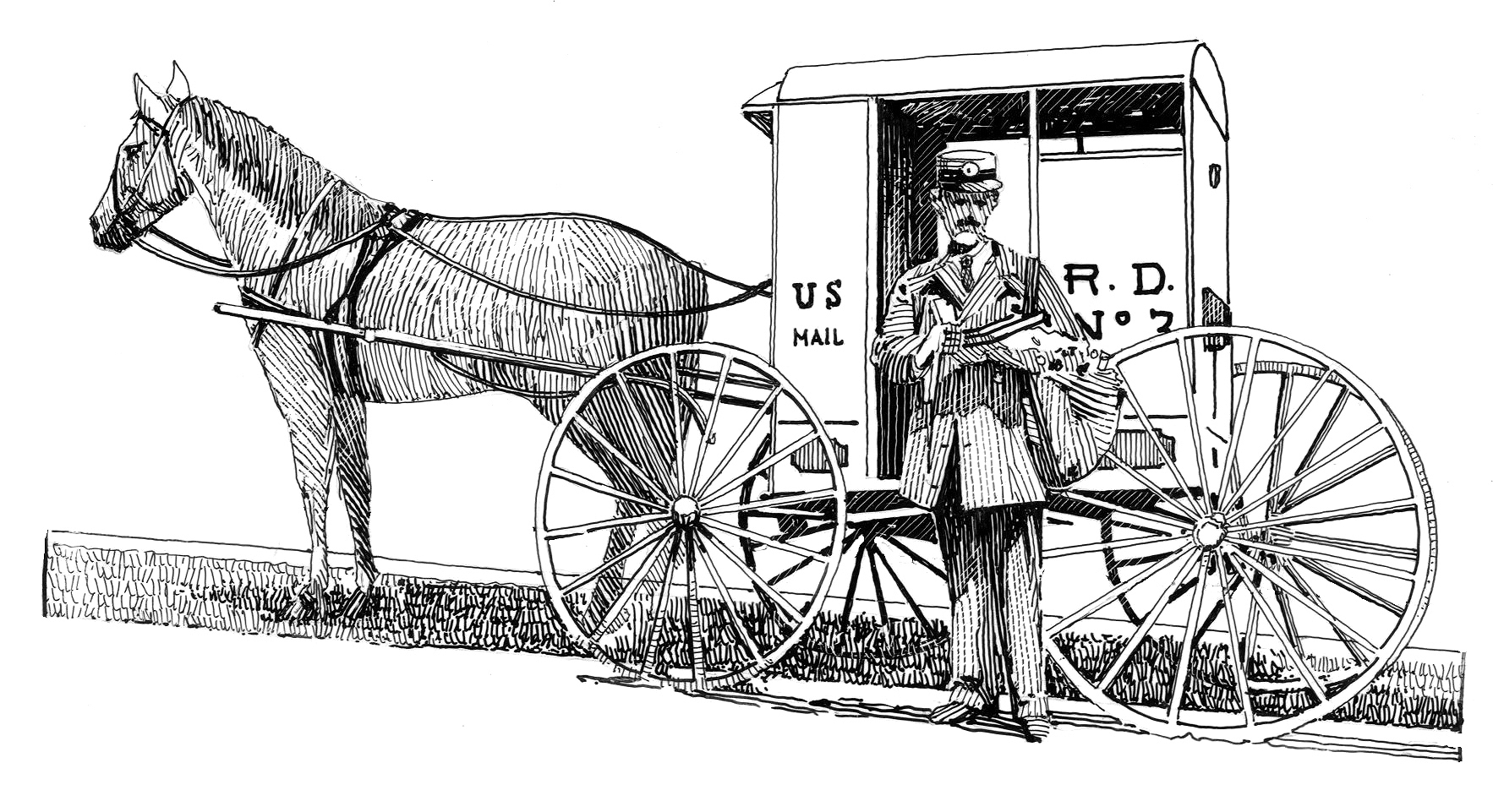
Although the confidentiality of correspondence wasn’t explicitly mentioned in the U.S. Constitution — perhaps because it was already taken for granted — it did receive a constitutional imprimatur in 1878, when the Supreme Court, as part of its landmark ruling in Ex parte Jackson, extended Fourth Amendment protections to letters. “The constitutional guaranty of the right of the people to be secure in their papers against unreasonable searches and seizures extends to their papers, thus closed against inspection, wherever they may be,” the Court declared. The Justices were careful to distinguish the legal standing of private letters, “intended to be kept free from inspection,” from that of widely circulated documents like newspapers and magazines, “purposely left in a condition to be examined.” A hundred years before the George Carlin case, the distinction between personal communication and public communication had been written into constitutional law.
The postal system remained the sole technology for long-distance personal communication until the construction of the telegraph system in the middle of the nineteenth century. The telegraph differed from the mail in important ways. Telegrams couldn’t be kept “closed against inspection” in sealed envelopes, for one thing; they had to be read by the operators who translated them into Morse code. And unlike the government-run post office, the telegraph was in private hands almost from the start, with a single company, Western Union, coming to dominate the business. Because of such differences, the question of whether telegrams should be granted the same privacy protections as letters remained a subject of debate for decades. Congress, worried about constraining its investigative powers, was wary of shielding telegrams from its subpoenas; and the courts, loath to set broad new precedents, struggled with how to fit the new system into established law. As is often the case, the speed of technological advance outpaced government’s ability to respond.
Despite the legislative and judicial wrangling, the public never had any doubt that messages sent over wires should be as secure as letters carried in pouches. During the second half of the nineteenth century, most states passed laws making it a crime for telegraph operators to disclose the contents of messages to others. The operators themselves took pride in what they saw as a professional and moral duty to maintain the confidentiality of transmissions. One telegrapher wrote in 1860 of the “high sense of honor which every operator feels upon this point.” Keeping telegrams secret, suggests historian of technology Thomas Jepsen, “came to be seen as a new form of ‘privilege,’ such as already existed under common law, similar to the privilege that protected the privacy of communication between a client and his lawyer, or between a physician and his patient.” The telegraph companies, too, took pains to assure customers that their messages would remain confidential. Western Union employees routinely refused to hand subpoenaed telegrams over to the government, even when faced with arrest. (Western Union’s record wasn’t perfect. During the 1876 presidential campaign, the company leaked sensitive telegrams to the campaign of its preferred candidate, Rutherford B. Hayes.)
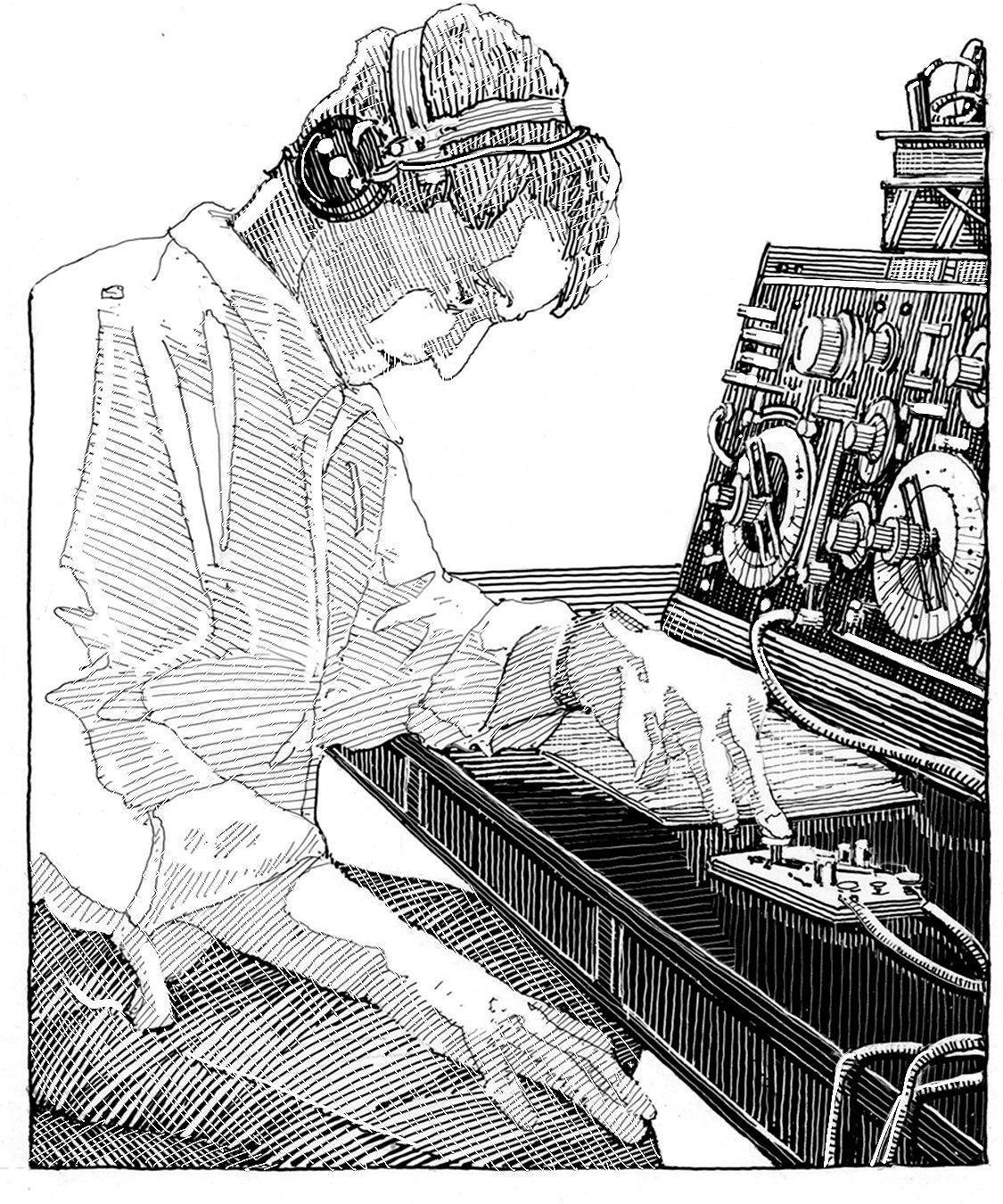
The prominent jurist and legal theorist Thomas M. Cooley was among the first to make the legal case that messages sent electronically deserve the same Fourth Amendment shield as those sent through the post. “The importance of public confidence in the inviolability of correspondence, through the post-office, cannot well be overrated,” he wrote in 1868. “The same may be said of private correspondence by telegraph.” Violating the confidentiality of a person’s telegram “would be equivalent to an unlawful and unjustifiable seizure of his papers, — such an ‘unreasonable seizure’ as is directly condemned by the Constitution.” New technologies may change how we converse with each other, Cooley understood, but they don’t change our belief, grounded in a sense of individual liberty and dignity, that we should get to control who hears or sees our words.
For most of the public, the debate over the privacy of telecommunications felt remote until the building of the telephone network at the turn of the century. Because sending a telegram was expensive and required a trip to a Western Union office, the telegraph was used mainly by the monied. The telephone system domesticated electronic communication. It brought the wire into the home. In the United States, with its commitment to universal service, telephones soon became as commonplace as mailboxes — and just as sacrosanct. Once dedicated household lines replaced neighborhood party lines, Americans expected the same guarantee of privacy for their calls as for their letters.
Congress, responding to growing public concerns about wiretapping, finally enshrined that expectation in law with the Communications Act of 1934. The legislation prohibited any person from intercepting an electronically transmitted message or divulging its “existence, contents, substance, purport, effect, or meaning” to anyone else without the authorization of the sender.
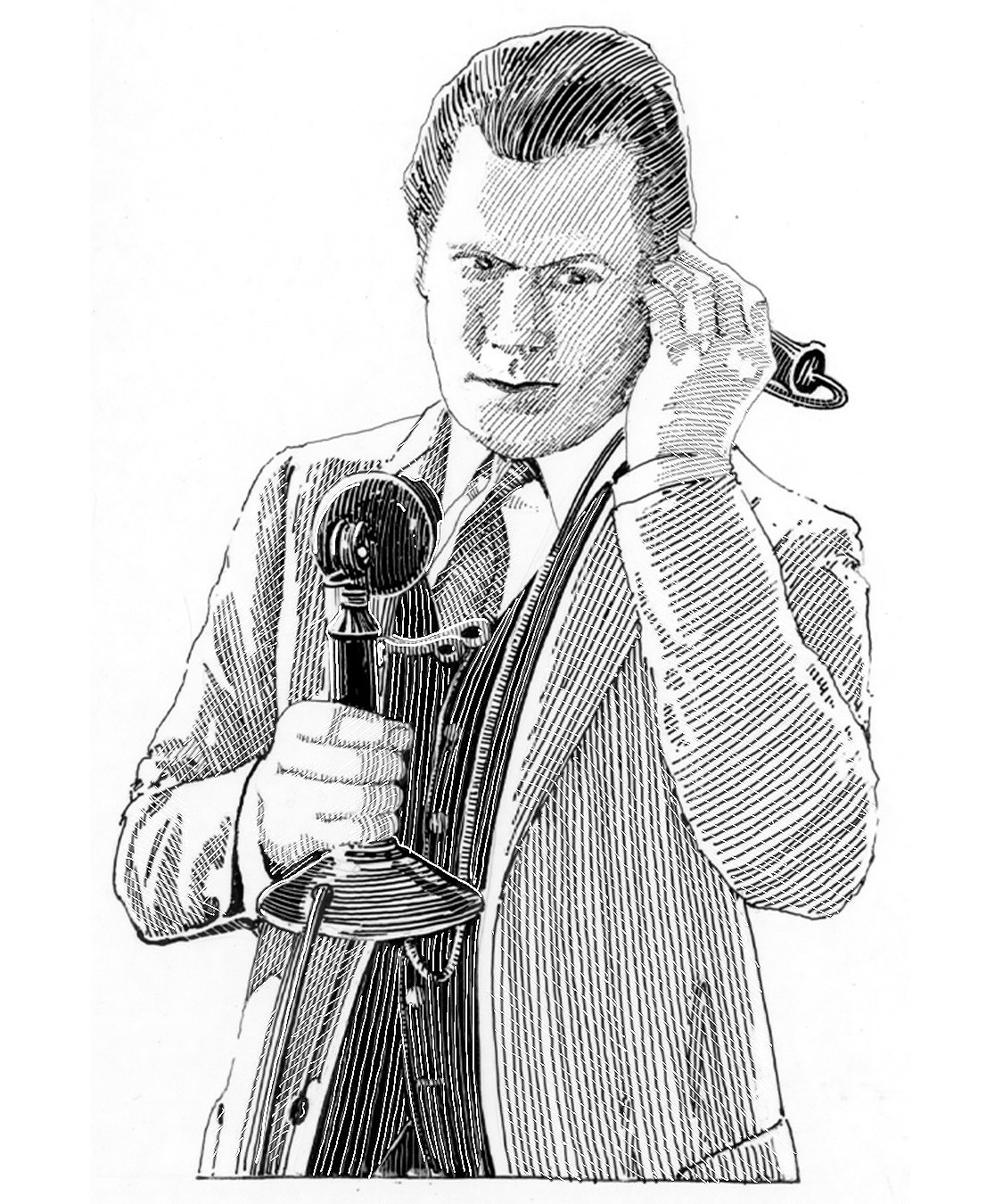
Under the terms of the act, telecommunications companies were required to operate as “common carriers.” The common carriage concept was borrowed from the transportation business. Early in the industrial age, countries recognized that shipping firms were economic linchpins — many other businesses depended on their services — and as a result wielded enormous power over commerce and trade. To ensure they didn’t abuse that power by favoring certain businesses and discriminating against others, shippers were required to carry all goods under the same terms. The Communications Act imposed a similar requirement on telecommunications carriers. They had to treat all telegrams and phone calls the same, transmitting them without regard to the information they contained. The companies, it was understood, had no business with the contents of the messages they carried.
The mass media age began quietly on Christmas Eve of 1906, when the inventor Reginald Fessenden aired a program of carols and Bible readings from a makeshift radio studio he’d built on the Massachusetts coast a few miles north of Plymouth. Radio had been invented a decade earlier by the Italian electrical engineer Guglielmo Marconi, but its use had been restricted to sending Morse signals to places telegraph lines couldn’t reach, like ships at sea. Fessenden was the first to use “the wireless” to broadcast what we would now call a show.
No one seems to have actually heard Fessenden’s show, other than a few surprised sailors, but it was momentous nonetheless. When the telegraph and the telephone arrived, they may have been new things in the world, but they had an important precedent in the mail system. Radio broadcasting had no such precedent. For the first time, a large, dispersed audience could receive the same information simultaneously and without delay from a single source. As would be the case with the Internet nearly a century later, the exotic new medium remained in the hands of tinkerers and hobbyists during its early years. Every evening, the airwaves buzzed with the transmissions of tens of thousands of amateur operators, who, as media historian Hugh R. Slotten observes, “tended to view the spectrum as a new, wide-open frontier, akin to the American West.”
The amateurs — adolescent boys, many of them — played a crucial role in the development of radio technology, and most used their sets responsibly. But some, in another foreshadowing of the net, were bent on mischief and mayhem. Shielded by anonymity, they would transmit rumors and lies, slurs and slanders. The U.S. Navy, which relied on radio to manage its fleet, was a prime target. Officers “complained bitterly,” Slotten reports, “about amateurs sending out fake distress calls or posing as naval commanders and sending ships on fraudulent missions.”
The nuisance became a crisis in the early morning hours of April 15, 1912, when the Titanic sank after its fateful collision with an iceberg. Efforts to rescue the passengers were hindered by a barrage of amateur radio messages. The messages clogged the airwaves, making it hard for official transmissions to get through. Worse, some of the amateurs sent out what we would today call fake news, including a widely circulated rumor that the Titanic remained seaworthy and was being towed to a nearby port for repairs.
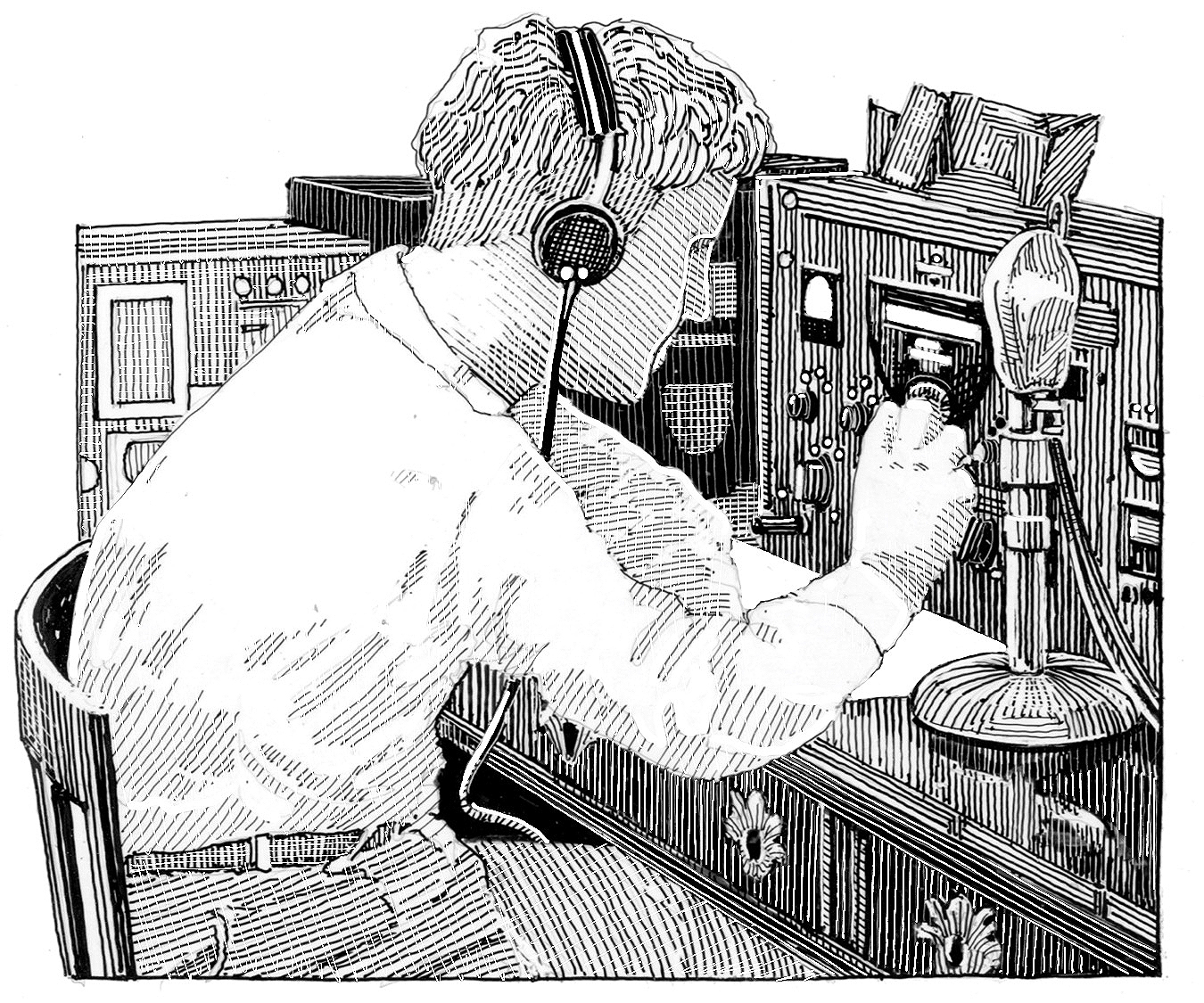
Although European countries had begun imposing government controls on wireless traffic as early as 1903, radio had been left largely unregulated in the United States. The public and the press, dazzled by the magical new technology, feared that bureaucratic meddling would stifle progress. Government intervention “would hamper the development of a great modern enterprise,” the New York Times opined in an editorial just three weeks before the Titanic’s sinking. “The pathways of the ether should not be involved in red tape.”
The Titanic tragedy changed everything, as Susan J. Douglas documents in her book Inventing American Broadcasting. The public was outraged, and the press demanded immediate government action. Four months later, Congress passed the Radio Act of 1912. Among the law’s provisions were requirements that all radio operators be licensed by the Department of Commerce, that senders of malicious messages be fined, and that amateur operators be restricted to the less-desirable shortwave band of the spectrum. Radio’s Wild West days were over.
Americans’ interest in radio continued to grow, however. As sales of sets soared in the boom years after the First World War, large companies moved into the market. Broadcasting became big business. In 1920, Westinghouse Electric founded the country’s first commercial station, KDKA in Pittsburgh. It was a sensation. The first broadcast, heavily promoted by Westinghouse, came on election night, when announcers gave rapt listeners up-to-the-minute results of the presidential race between Warren Harding and James Cox. “Between announcements of the returns,” reported the Pittsburgh Gazette Times, “radiophone music was transmitted, which added much to the entertainment.” Within two years, more than five hundred commercial stations were operating across the country, and radios had become centerpieces of American living rooms.
The rapid rise of commercial radio made clear that broadcasting’s “uniquely pervasive presence,” as Justice Stevens later described it, would change the way Americans inform and amuse themselves. “No other invention in all time invaded the home so rapidly and entrenched itself so securely as radio,” said then–Secretary of Commerce Herbert Hoover in 1925.
Hoover was excited and optimistic about the new technology — he wrote in Popular Science Monthly of a “dawn glowing with the promise of profound influence on public education and public welfare” — but he saw risks and dangers as well. Radio stations, through their selection of what to broadcast or not to broadcast, would hold sway over the public’s thoughts, attitudes, and even votes. Radio would shape the country’s culture and its politics, for better or for worse. It was obvious to Hoover, and to pretty much everyone else at the time, that the public had an interest in broadcasting that went well beyond turning the tuning knob.
As with the secrecy of correspondence, the idea that certain businesses must be responsive to the public interest had a long heritage. It derived from a centuries-old distinction between companies that have strictly “private callings” and those that also have “public callings.” The Supreme Court had explained the distinction in its 1877 decision in Munn v. Illinois upholding the government’s right to regulate grain storage facilities. “Property does become clothed with a public interest when used in a manner to make it of public consequence, and affect the community at large,” the Court wrote. “When, therefore, one devotes his property to a use in which the public has an interest, he, in effect, grants to the public an interest in that use, and must submit to be controlled by the public for the common good.”
Broadcasting is not grain storage. Because it deals in the intangible goods that shape the public mind — ideas and opinions, facts and fabrications — it is inherently political. That broadcasting had a public calling may have been obvious in the 1920s, but the nature of that calling was not. Without any precedent to draw on, society had to figure out, more or less from scratch, how to accommodate the powerful new technology — how to tap its many benefits while curbing its destructive potential. It was a complicated, daunting challenge, requiring that the interests of the “community at large” be balanced not just against the interests of private businesses but also against the interests of individuals, including the right to freedom of expression.
If that sounds uncomfortably familiar, it’s because we now face a similar balancing act as we struggle to accommodate social media. The way the country met the challenge a hundred years ago, haltingly but effectively, holds important lessons for us today.
Beginning in early 1922, Hoover’s Commerce Department convened a series of conferences aimed at bringing order to the chaotic broadcasting market. Attending were representatives of government, industry, the military, and the listening public, along with prominent radio engineers and scientists. Much of the discussion involved technical issues, such as establishing equipment standards and reducing interference between stations. But political, economic, and social questions were also on the agenda. What criteria should be used in allocating spectrum? Should local stations, at the time mainly operated by universities or civic groups, be protected from large corporate networks? Should advertising be permitted? Should a balance of viewpoints be required? What roles should religious and educational programming play? Should political candidates and government officials be allowed to speak on the air? The wide range of topics reflected Hoover’s belief that, as he put it in a speech at one of the sessions, “The ether is a public medium, and its use must be for public benefit.”
Building on the work of the conferences, and once again responding to public pressure, Congress passed the Radio Act of 1927, replacing the earlier law. Defining access to the airwaves as a privilege, the legislation mandated that radio stations serve the “public interest, convenience, or necessity” — an awkward phrase that would come to have a profound influence on the nation’s communications policy. To enforce the “public interest standard,” as it came to be known, the act established an independent regulatory agency, the Federal Radio Commission, and gave it broad oversight authority.
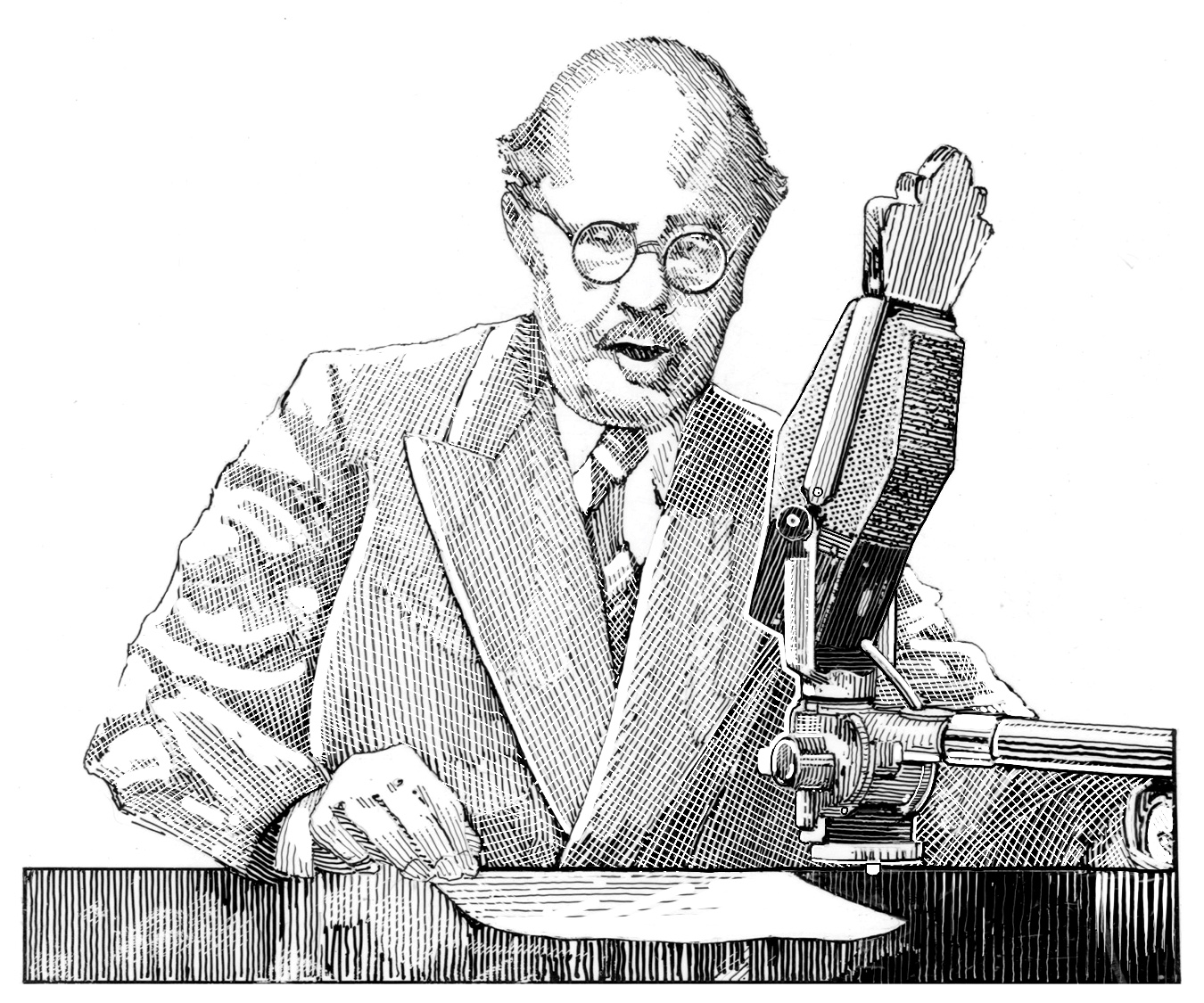
The FRC wielded that authority with vigor. In one famous case with particular relevance today, the commission acted to stem the spread of medical misinformation over the airwaves. In 1923, a doctor named John Brinkley, who had made a fortune transplanting goat testicles into men as a treatment for impotence, had started his own radio station, KFKB, in Kansas. He used it to promote a variety of quack treatments and medications, often offering specious and dangerous on-air diagnoses to listeners. In 1930, the FRC stripped Brinkley of his broadcasting license, ruling that his programming “is inimical to the public health and safety, and for that reason is not in the public interest.” When Brinkley appealed the decision, claiming censorship, the federal appeals court backed the commission. The FRC had not subjected Brinkley’s “broadcasting matter to scrutiny prior to its release,” the court wrote, but had “merely exercised its undoubted right to take note of appellant’s past conduct, which is not censorship.”
Congress intended the FRC’s extensive rulemaking powers to be temporary. Legislators still assumed that once the various technical issues had been worked out, the nascent radio industry would essentially be able to regulate itself. That hope proved vain. With the even more expansive Communications Act of 1934, Congress replaced the FRC with a more permanent body, the Federal Communications Commission, and widened its purview to include the personal communication systems of telephony and telegraphy, and eventually the new broadcast medium of television. By combining the mandate that telephone and telegraph providers operate as common carriers with the mandate that broadcasters act in the public interest, the legislation formalized the two-pronged philosophy that would govern electronic communications for the rest of the century.
The common carriage standard imposed clear, consistent guidelines on telecommunications companies. They had to transmit messages without prejudice and without violating the sender’s confidentiality. The public interest standard was much fuzzier. Neither the Radio Act nor the Communications Act defined exactly what it meant for broadcasters to serve the “public interest, convenience, or necessity.” The interpretation was left up to the commission, subject to court review. Over the years, the standard’s meaning was hashed out through dozens of cases, many involving years of debate. As the legal scholars Erwin G. Krasnow and Jack N. Goodman observed in a 1998 law review article, “Perhaps no single area of communications policy has generated as much scholarly discourse, judicial analysis, and political debate over the course of the last seventy years as has that simple directive to regulate in the ‘public interest.’”
Both the contentiousness and the flexibility of the rule-making process can be seen in the way regulators, along with judges and lawmakers, struggled through the years to address what has always been one of media’s most charged issues: what to do about political bias in broadcasting.
From its founding, the Federal Radio Commission had been concerned that stations could use their broadcasts to promote the opinions of their owners and ignore or denigrate conflicting views. “Public interest requires ample play for the free and fair competition of opposing views,” the FRC declared in a 1929 ruling. The Federal Communications Commission went further in the 1940s. Responding to complaints that a station had used the airwaves to support its own political causes, the FCC established the so-called Mayflower doctrine, named for one of the companies involved in the ruling. The doctrine prohibited a broadcaster from editorializing on his own behalf, or indeed on the behalf of “the candidacies of his friends,” or the “principles he happens to regard most favorably.” As the commission put it, “the broadcaster cannot be an advocate.”
The doctrine was immediately controversial, with many arguing that it violated the free-speech and free-press rights of station owners. The commission held a series of hearings on the issue in 1948, gathering the testimony of dozens of representatives from the broadcasting industry, the public, and various civic groups. The discussions led the FCC to repeal the Mayflower doctrine the following year and replace it with what came to be known as the “fairness doctrine.” Under the new rule, stations were required to devote substantial airtime to discussions of “public issues of interest in the community,” and while they could present their own opinions, they also had to allot time for other views. “It is this right of the public to be informed,” the commission stressed, that forms “the foundation stone of the American system of broadcasting.”
The fairness doctrine was revisited and revised over the years. In 1967, after a conservative radio station aired a broadcast accusing a liberal journalist of having Communist sympathies, the FCC enacted a rule extending the doctrine to cover personal attacks. Any station that broadcast a program denigrating an individual’s “honesty, character, integrity or like personal qualities” was required to notify the person and offer an opportunity to respond. The rule, attacked by a broadcasters’ group as unconstitutional, was upheld by the Supreme Court in a 1969 decision. The unique power of broadcasters, the court ruled, entailed special social responsibilities. “The right of free speech of a broadcaster,” the justices wrote, “does not embrace a right to snuff out the free speech of others.”
In the late 1970s, the fairness doctrine began to fall out of favor, as the public soured on government regulation in general. After President Reagan appointed Mark Fowler, a vocal critic of the doctrine, to chair the FCC in 1981, the commission’s enforcement of the rule slackened. In 1987, despite protests from both sides of the aisle in Congress, the FCC abolished the fairness doctrine altogether. Even today, that decision remains controversial, with some policymakers arguing for the rule’s reinstatement.
As the fraught history of the fairness doctrine makes clear, the public interest standard is not a magic bullet. Its amorphousness means that its interpretation will always be messy, combative, and provisional — as political processes tend to be in a democracy. Some legal scholars and pundits, particularly those with a libertarian tilt, have argued that the standard’s imprecision gives government regulators too much leeway. The standard, writes one typical critic, is “vague to the point of vacuousness, providing neither guidance nor constraint.” But that’s a misinterpretation. The public interest standard is more than just a legal principle. It is an ethical principle. It assures the people’s right to have a say in the workings of the institutions and systems that shape their lives — a right fundamental to a true democracy and a just society. The vagueness of the standard is necessary for a simple reason: public opinion changes as circumstances change.
The value of the public interest standard was summed up well by Supreme Court Justice Felix Frankfurter in a 1940 opinion upholding it as the “touchstone” of the FCC’s authority under the Communications Act. The standard “serves as a supple instrument for the exercise of discretion,” wrote Frankfurter. Underlying it is a “recognition of the rapidly fluctuating factors characteristic of the evolution of broadcasting and of the corresponding requirement that the administrative process possess sufficient flexibility to adjust itself to these factors.” Frankfurter understood that the public interest standard, like the public interest itself, is not static but dynamic. Far from being a weakness of the doctrine, that is its core strength.
In the mid-seventies, just as the George Carlin case was making its way through the courts, media’s tectonic plates began to shift again. A new series of innovations — beginning with cable television and cellular telephony, continuing through personal computing, and culminating in broadband Internet and social media — overturned all the old assumptions about electronic communications. The scarcity of the electromagnetic spectrum turned into the abundance of the fiber-optic network. Digitization, by enabling all forms of information to be transmitted through a common network, muddied the boundary between personal and public communications. A smartphone can serve as a mailbox, a telephone, a radio, and a TV — all at the same time. On a social network like Facebook, conversations feel like broadcasts, and broadcasts feel like conversations.
The media upheaval arrived as the deregulation wave was peaking. The public put its faith in unfettered markets. If companies were left to compete without restraint, the thinking went, industries would regulate themselves, to everyone’s benefit. The free-market spirit permeated the sweeping Telecommunications Act of 1996. Signed into law with great enthusiasm by President Clinton, the legislation stripped away the government controls that had shaped the media industry since the 1934 Communications Act. The convergence of technologies was soon mirrored by a convergence of markets, as traditional telecommunications and broadcasting firms battled tech giants and Internet newcomers for dominance in digital communications. Although the public interest standard remained in the statutes, it had lost its teeth. For the FCC, defending the public interest meant little more than expanding consumer choice.
The results aren’t surprising, or at least shouldn’t be. In a replay of what happened a hundred years ago, the combination of rapid technological advance and weak public oversight produced the state of confusion we find ourselves in today. Media chaos has returned, though this time the consequences are even more destabilizing. A few large companies, free to set their own rules, wield control over public and private communications. Conversation and correspondence, far from being treated as confidential, are rifled through by marketers to extract sensitive personal data. Propaganda, lies, and defamatory attacks get broadcast to the masses, often by sources that can’t be traced. Rather than promoting an informed public, social media has promoted polarization, extremism, and, all too often, ignorance. Solutions to the problems remain elusive. There’s much finger-pointing but little action.
But if the early history of mass media illuminates how we got into the current mess, it also suggests a path out. The technologies of conversation on the one hand and broadcasting on the other may have merged, but at a human level the distinction between the two activities has not gone away. The distinction, after all, derives not from the means of communication but from the intent of the communicator. This point was emphasized in a seminal 1890 Harvard Law Review article, “The Right to Privacy,” by Louis Brandeis and Samuel Warren.
The common law secures to each individual the right of determining, ordinarily, to what extent his thoughts, sentiments, and emotions shall be communicated to others…. Even if he has chosen to give them expression, he generally retains the power to fix the limits of the publicity which shall be given them.
Brandeis and Warren warned that as new “inventions and business methods” invade “the sacred precincts of private and domestic life,” society will need to renew its legal and institutional defenses against the incursions.
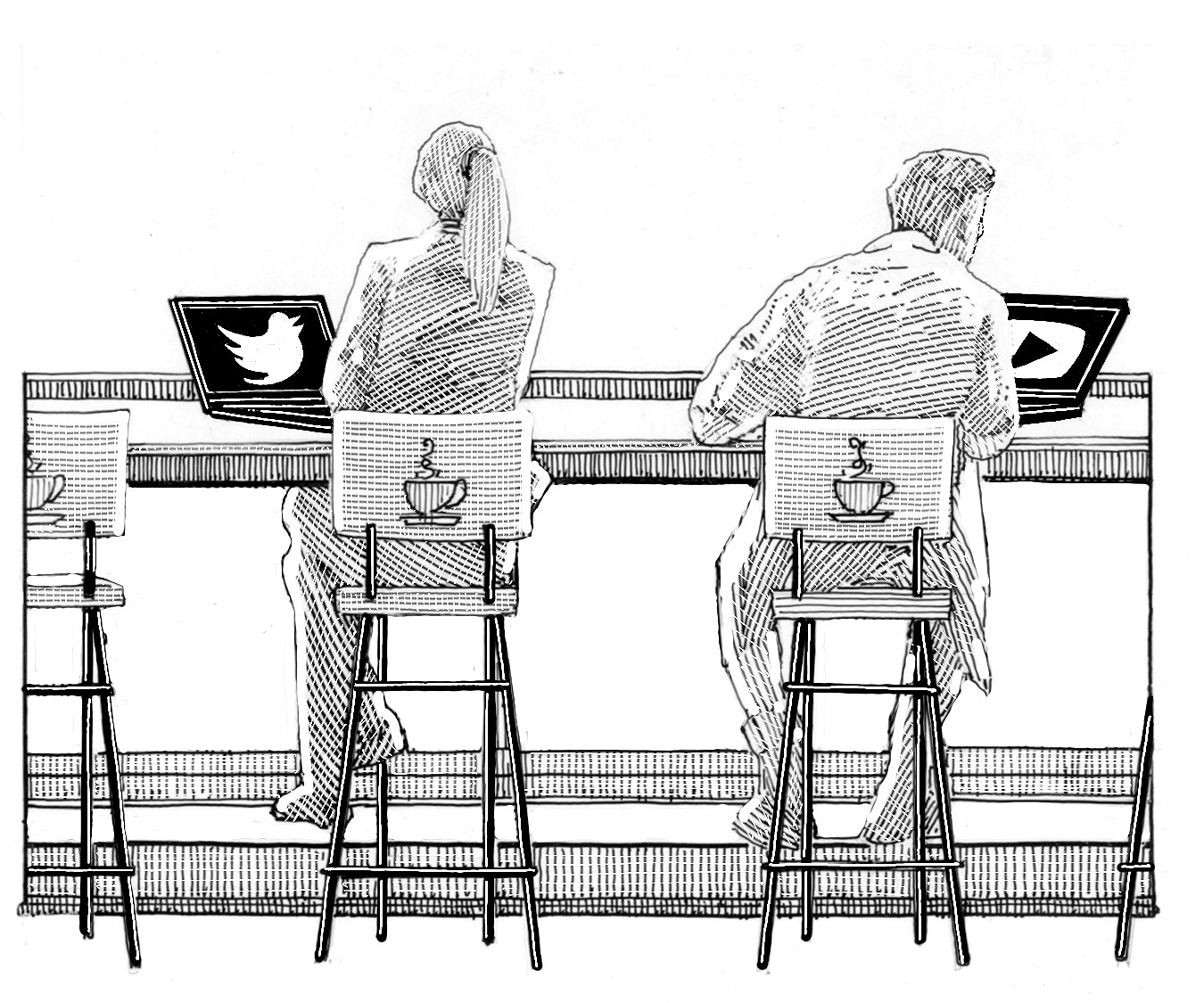
There are several ways to decipher intent in social media communications. Some are straightforward. Certain platforms, like YouTube, TikTok, Twitch, and Clubhouse, operate largely as broadcasting channels, while others, like Messenger, Zoom, and Facetime, are used mainly for personal conversation. Many platforms, Snapchat being a prominent example, offer users different modes of communication, some geared to personal speech, others to public speech. On platforms where personal and public speech are intertwined, such as Facebook, Twitter, and Instagram, the intent of the communicator can often be gauged through proxies such as numbers of followers, views, likes, or comments — measures that all the platforms track meticulously. An Instagrammer with a hundred followers can be assumed to be engaged in conversation; an Instagrammer with a hundred thousand followers is a broadcaster. Most major platforms also now have formal programs for attracting and rewarding “influencers” and other popular content creators. Such programs offer another way to identify those engaged in broadcasting.
Exhausted by science and tech debates that go nowhere?
It will never be possible to draw a bright line between personal and public speech on social media. When all types of speech go through the same medium, some confusion is inevitable — and in many cases welcome. A witty or cutting remark shared among friends on Twitter may go viral, turning into public speech and granting the speaker a few moments of fame (or infamy). Nor is intent always clear-cut. Someone posting selfies to a small group of Instagram followers may be motivated by a desire to become a fashion influencer. The exceptions will always be there, but they don’t matter much when it comes to questions of governance. They don’t change the fact that most social media content can, by dint of its intention or its reach, be categorized as either personal speech or public speech. Social media companies themselves routinely sort content into the two categories, sometimes explicitly, sometimes implicitly, as they seek to fine-tune their programming and boost their fortunes as broadcasters. The public can do the same sorting.
Disentangling personal speech and public speech is clarifying. It reveals the dual roles that social media companies play. They transmit personal messages on behalf of individuals, and they broadcast a variety of content to the general public. The two businesses have very different characteristics, as we’ve seen, and they demand different kinds of oversight. The two-pronged regulatory approach of the last century, far from being obsolete, remains vital. It can once again help bring order to a chaotic media environment. For a Congress struggling with the complexities of the social media crisis, it might even serve as the basis of a broad new law — a Digital Communications Act in the tradition of the original Communications Act — that both protects the privacy of personal correspondence and conversation and secures the public’s interest in broadcasting.
What would such legislation look like? It would have two thrusts. First, it would extend the secrecy-of-correspondence doctrine to cover the personal communications that flow in so many forms online. Second, it would apply the public interest standard to online broadcasting, reinvigorating the FCC’s venerable oversight role.
When transmitting personal speech, whether in the form of emails, text messages, video chats, or social media posts, Internet companies in general and social media companies in particular would be expected to act as common carriers. They would transmit our messages without prejudice, and they would be prohibited from exploiting the contents of those messages, or any related personal information, for commercial purposes. When an app needs to draw on personal data to perform a function requested by the user, it would operate as a closed-loop system, using the data only to provide the specified function. The privacy restrictions would also cover our conversations with chatbots like Alexa and Siri and our interactions with other automated systems such as Google’s search engine. Like the professional telegraph operators of old, the machines that “read” our correspondence would be expected to respect our privacy and dignity.
Americans have never doubted their right to privacy online. A 2019 Pew Research survey found that three-quarters of U.S. adults want greater government regulation of personal data, and a 2021 poll by Morning Consult showed that more than 80 percent of both Republicans and Democrats want Congress to stiffen data protection laws. When Apple this year started letting iPhone owners choose whether to allow companies like Facebook to collect data about them and use it for advertising and other purposes, just six percent opted in to the surveillance, according to research by Flurry Analytics. Prohibiting web companies from snooping on us would spark profound changes in social media. It would disrupt the disruptors. That, too, would bring welcome benefits, encouraging competition and innovation in an industry that today operates like an oligopoly.
Regulating the broadcasting side of social media is more complicated. It requires a new conception of what social media means and what role it plays in society. To avoid public oversight, Internet companies have long claimed that they are in the technology business, not the media business. The courts have tended to agree. When in 1997 the Supreme Court overturned many of the content restrictions that Congress had imposed on the Internet through the Communications Decency Act of 1996, the justices suggested that the Internet wasn’t a pervasive medium like radio or television. “The receipt of information on the Internet,” the Court argued, “requires a series of affirmative steps more deliberate and directed than merely turning a dial.”
But much has changed over the last quarter-century. In 1997, home broadband was still a rarity. To go online, people had to boot up their PC and log on to the web through a balky dial-up modem. They were often limited to a few hours of Internet access a week. Today, with smartphones constantly connected to high-speed wi-fi and cellular signals, the situation is entirely different. You don’t need to turn a dial to be inundated with streams of digital information.
Social media companies employ armies of engineers and programmers, but it’s clear now that they are not in the technology business. They have a public calling. Through their omnipresence in our lives and their algorithmic manipulation of the information we see, they exert an influence over society at least as strong as that of radio and TV companies in the twentieth century. Businesses like Facebook and Google have exactly the kind of “uniquely pervasive presence,” to quote Justice Stevens again, that warrants strong public governance. As the dominant informational networks of the twenty-first century, they need to be accountable for the content they broadcast, whatever its source.
The much-debated Section 230 of the Communications Decency Act — one of the few parts of the law to survive court challenges — currently shields web companies from accountability for the material they allow to be posted online. It places private interest above public interest. The laissez-faire approach may have made sense in the web’s early days, when the future shape of digital broadcasting was impossible to foresee, but it’s counterproductive today.
Social media companies, and those who produce content on their platforms, should operate not under a liability shield that isolates them from the public interest but under a set of rules that makes them responsive to the public interest. It’s worth remembering that Congress’s decision to license radio operators after the Titanic disaster was about more than just allocating scarce spectrum. It was about bringing those who speak to the masses out of the shadows and into the daylight of the public square. It was about making broadcasters, whether individuals, businesses, or other organizations, visible and accountable. We may not need to establish a formal licensing program for social media, but we do need to bring the spirit of the common good back to broadcasting.
An ambitious Digital Communications Act along the lines sketched out here would be complicated and controversial. It would be resisted by many powerful private interests. It would not be a panacea. But we can no longer pretend that social media will fix itself. What we face today is a societal challenge, not a technological one. Without judicious regulation, the current problems will only get worse.
Fortunately, history provides a precedent for using democratic processes and public institutions to govern media during a time of great upheaval. What’s needed now is the will of the people.
Notifications